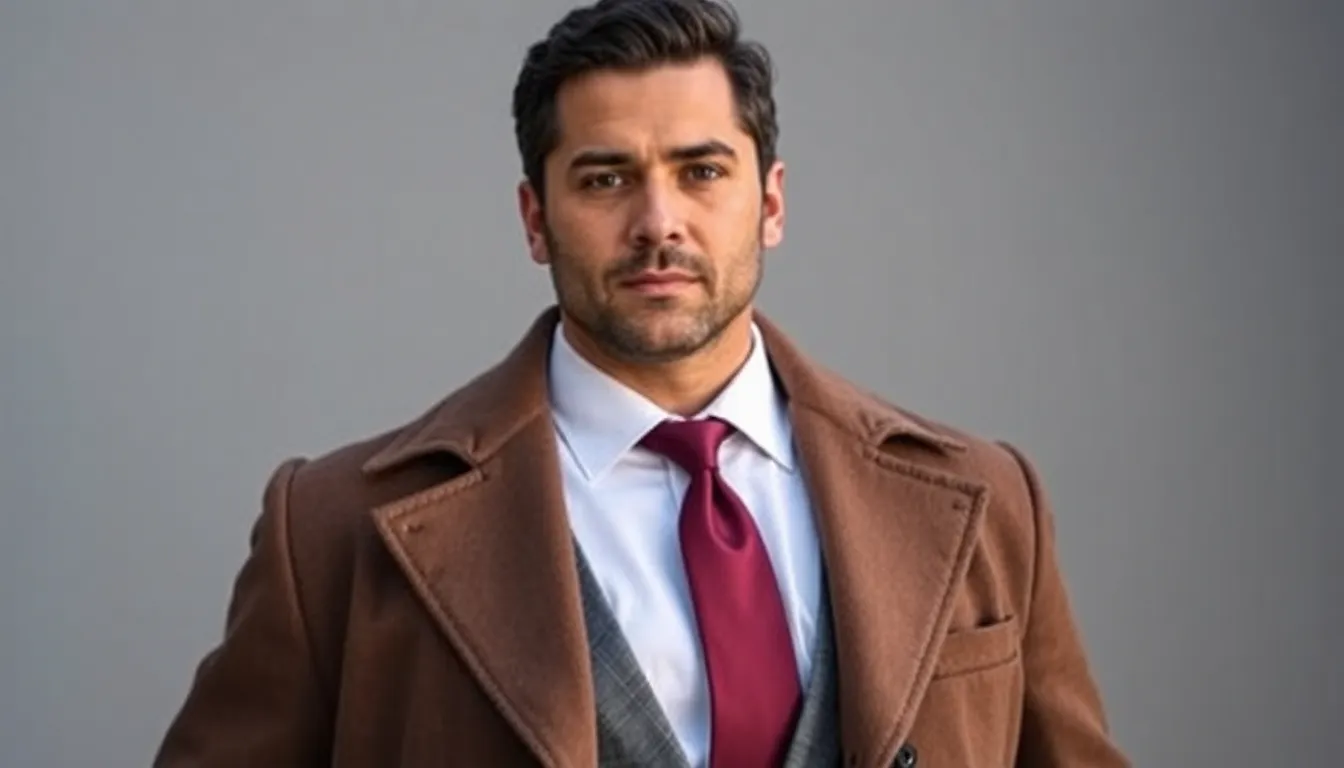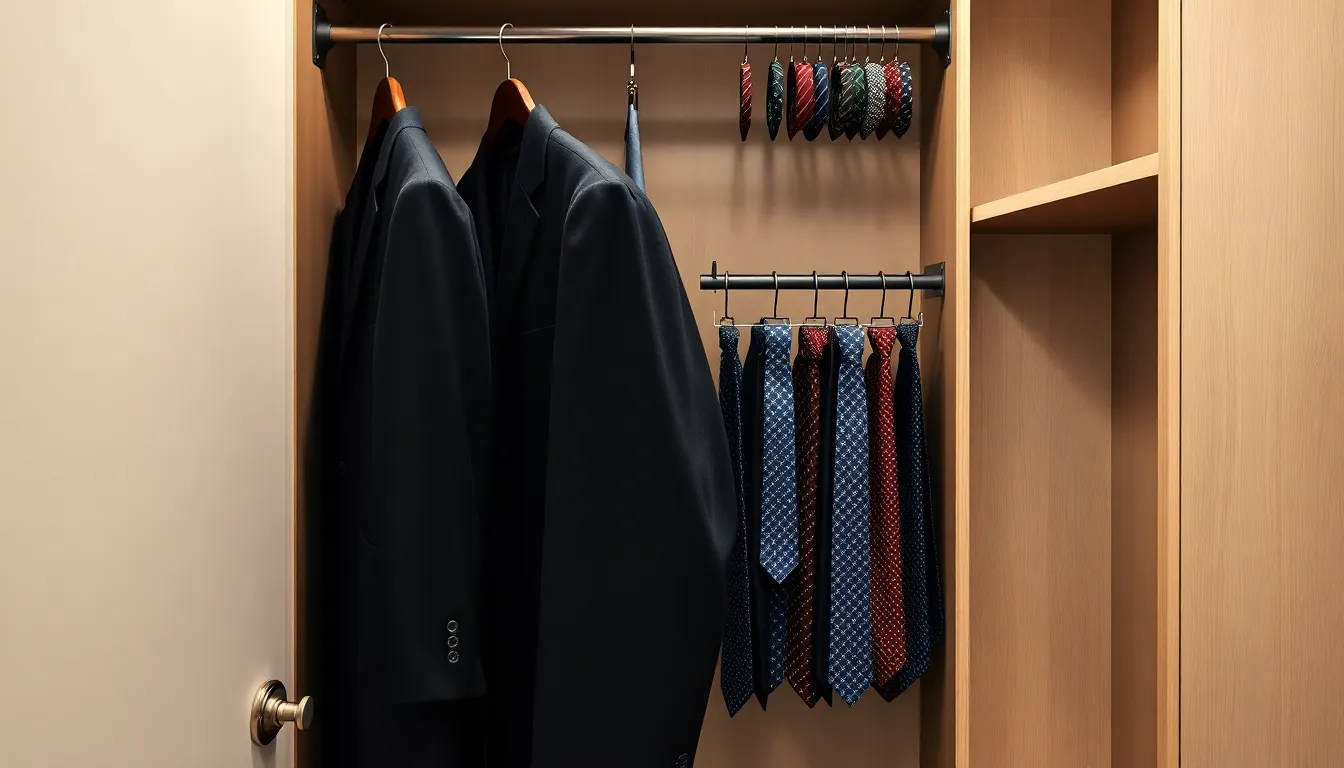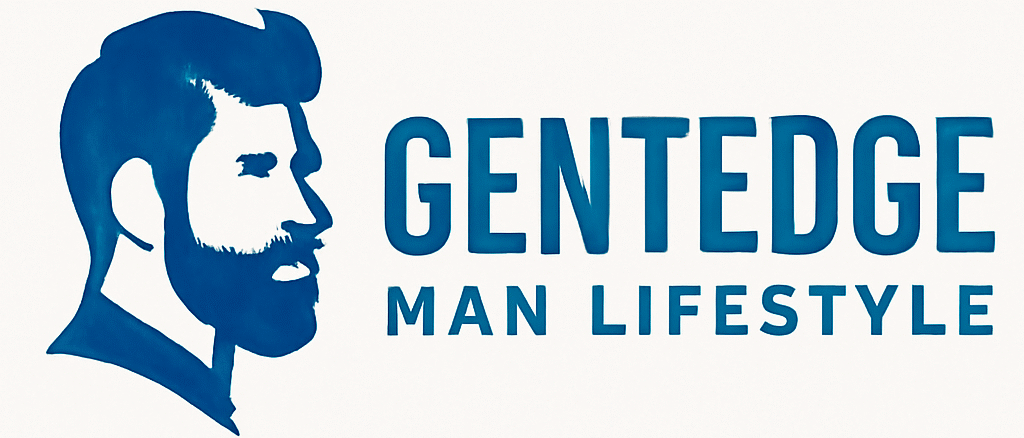A well-fitted coat and tie remains the cornerstone of men’s professional and formal attire. Whether you’re preparing for a job interview, attending a wedding, or handling the corporate industry, mastering this timeless combination can elevate your presence and boost your confidence. The right pairing speaks volumes about your attention to detail and personal style.
We’ve all witnessed the groundbreaking power of a sharp coat and tie ensemble. It’s the difference between blending into the crowd and commanding respect when you walk into a room. Yet many men struggle with the fundamentals – from selecting complementary colors to achieving the perfect fit and understanding when each style is most appropriate.
In today’s competitive industry, your appearance often creates that crucial first impression before you even speak. We’ll guide you through everything you need to know about choosing, styling, and wearing coats and ties with confidence, ensuring you’re always dressed for success.
Understanding the Classic Coat and Tie Combination for Men
Understanding coat and tie combinations forms the foundation of sophisticated menswear. Mastering these essential pieces elevates your professional image and personal style confidence.
Essential Elements of Professional Menswear
Fit stands as the most critical component of any coat and tie ensemble. Your jacket should sit naturally across your shoulders without pulling or bunching, while sleeves reveal about a quarter inch of shirt cuff. The jacket’s length should cover your rear end completely, and you should be able to button it comfortably without fabric straining.
Fabric quality determines longevity and appearance throughout wear. Wool remains the gold standard for suits, offering durability and breathability that synthetic blends can’t match. Cotton works well for casual blazers, while linen suits excel in warmer climates but wrinkle easily.
Color coordination creates visual harmony between your coat and tie. Navy suits pair beautifully with burgundy, gold, or silver ties. Charcoal gray coats complement virtually any tie color, making them versatile wardrobe staples. Black suits work best for formal evening events rather than daytime business settings.
Proportions affect your overall silhouette significantly. Taller men can wear wider lapels and bolder patterns, while shorter men should choose narrower lapels and subtle designs. Your tie width should complement your lapel width for balanced proportions.
Why Every Man Needs a Quality Coat and Tie
Career advancement opportunities increase when you dress professionally and appropriately. Studies show that well-dressed employees receive promotions 40% more frequently than their casually dressed counterparts. Your appearance communicates competence and attention to detail before you even speak.
Social occasions demand appropriate attire that reflects respect for the event and other attendees. Weddings, graduation ceremonies, and religious services all require coat and tie combinations. Having quality pieces ready ensures you’re never underdressed for important moments.
Confidence levels rise dramatically when you know you look polished and put together. The psychological impact of wearing well-fitted professional attire affects your posture, speech patterns, and overall presence. This confidence translates into better performance in meetings, interviews, and social interactions.
Investment value makes quality pieces worthwhile over time. A well-made suit costs between $400 to $800 but lasts 5 to 10 years with proper care. Cheaper alternatives require frequent replacement, making quality purchases more economical long term.
Versatility allows multiple styling options from a single coat and tie foundation. Change your shirt, pocket square, or accessories to create different looks for various occasions. This flexibility maximizes your wardrobe’s potential while minimizing storage needs.
Choosing the Right Coat Style for Different Occasions

Understanding the distinct characteristics of each coat style helps you navigate various social and professional environments with confidence. We’ll explore three fundamental coat types that form the backbone of any sophisticated wardrobe.
Business Suit Jackets for Professional Settings
Business suit jackets represent the pinnacle of professional menswear and command respect in corporate environments. These structured garments feature clean lines and precise tailoring that conveys authority and competence. Dark solid colors like navy, black, or charcoal remain the gold standard for business settings.
Pairing these jackets with crisp dress shirts in white or light blue creates a polished foundation for your professional image. Conservative tie selections work best with business suits, including solid colors or classic patterns like stripes and small dots in complementary color schemes. Texture contrast adds visual depth to your ensemble, such as combining a wool suit with a cotton shirt and knit tie, without overwhelming the professional tone.
Fit remains crucial for business suit jackets, as proper tailoring distinguishes executive presence from casual approximation. We recommend ensuring the jacket shoulders align with your natural shoulder line and sleeves reveal approximately half an inch of shirt cuff.
Sport Coats for Semi-Formal Events
Sport coats offer more flexibility than their business counterparts while maintaining sophisticated appeal for semi-formal occasions. These versatile pieces often feature varied patterns and textures like tweeds or herringbones that add character to your wardrobe. Rich fabrics and subtle patterns make sport coats perfect for events where full suits feel overdressed.
Creating visual balance becomes easier with sport coats through strategic pattern mixing. Wearing a patterned shirt with a solid tie or vice versa produces a stylish yet refined appearance. Seasonal color choices enhance your sport coat combinations, with deeper hues like burgundy or forest green in ties complementing richer coat fabrics during fall and winter months.
Fabric variety distinguishes sport coats from other jacket types, with wool blends and textured materials providing both comfort and style. These jackets bridge the gap between formal and casual, making them ideal for creative professionals and social gatherings.
Blazers for Versatile Everyday Wear
Blazers provide the ultimate in menswear versatility, adapting seamlessly from office casual to evening social events. These solid-colored jackets typically feature lighter construction than suit jackets, offering comfort throughout long days. Navy and black blazers form the foundation of most men’s casual professional wardrobes.
Experimentation becomes possible with blazer combinations, allowing you to explore various colors and textures in both shirts and ties. A blazer paired with a shirt and tie creates a polished yet approachable aesthetic that works particularly well in creative industries where personality can shine through professional attire.
Adaptability sets blazers apart from other coat styles, as they transition effortlessly between different dress codes and occasions. We find blazers work equally well with dress shirts and ties for business casual environments or with more casual shirts without ties for smart casual settings.
Multiple styling options make blazers an excellent investment, as they pair with everything from dress trousers to dark jeans depending on the occasion’s formality level.
Selecting the Perfect Tie to Complement Your Coat

Mastering the art of tie selection transforms your coat and tie combination from ordinary to exceptional. We recommend focusing on three key elements: contrast, color harmony, and fabric appropriateness to create a polished professional appearance.
Silk Ties for Formal Business Attire
Silk ties represent the gold standard for formal and business settings, providing the lustrous finish that elevates your professional presence. We’ve found that silk’s smooth texture pairs exceptionally well with wool coats and customized suit jackets, creating a refined aesthetic that commands respect in corporate environments.
Color coordination becomes crucial when selecting silk ties for business attire. Navy coats look striking with orange, green, or brown silk ties, while charcoal suits allow for more adventurous choices like madder tones or brighter colors such as gold and red. We recommend choosing ties that are darker than your shirt to maintain proper contrast and visual hierarchy.
Pattern selection requires careful consideration of scale and balance. Solid silk ties in conservative colors like navy, burgundy, or dark green offer maximum versatility and refinement. Subtle patterns such as small dots or thin stripes work well when you want to add visual interest without overwhelming your overall look.
Width proportions matter significantly for achieving a balanced silhouette. We suggest matching your tie width to your coat’s lapel width, typically around 3 to 3.5 inches, to maintain proper proportional harmony throughout your ensemble.
Knit Ties for Casual Professional Looks
Knit ties offer the perfect bridge between formal and casual, providing texture and visual interest while maintaining professional appropriateness. We’ve observed that silk or wool knit ties pair exceptionally well with unstructured coats and blazers, creating a sophisticated yet approachable aesthetic.
Texture contrast becomes your strongest asset when incorporating knit ties into your wardrobe. The raised surface of knit ties creates visual depth against smooth coat fabrics, adding dimension to your overall appearance without sacrificing professionalism.
Business casual environments particularly benefit from knit tie styling. Creative fields and offices with relaxed dress codes appreciate the approachable sophistication that knit ties provide. We recommend solid colors or simple patterns in knit ties to maintain versatility while expressing subtle personality.
Seasonal adaptability makes knit ties especially valuable for year round wear. Wool knit ties work beautifully during cooler months, while silk knit options provide breathability for warmer weather while maintaining that essential textural element.
Bow Ties for Special Occasions
Bow ties command attention and respect at formal events, making them indispensable for black tie affairs, weddings, and elegant dinner parties. We consider bow ties the ultimate statement piece that demands precision in both selection and execution.
Black silk bow ties remain the iconic choice for tuxedo coats, creating the classic formal look that never goes out of style. The peaked or shawl lapel tuxedo coat provides the perfect framework for showcasing a well tied bow tie’s sophisticated appeal.
Patterned and colored bow ties offer opportunities for personality expression at semi formal gatherings. We’ve seen great success with subtle patterns or rich colors that complement the coat while adding visual interest to special occasion attire.
Proportion requirements become even more critical with bow ties than traditional neckties. The bow tie must complement your coat’s lapel width and your facial features to create a harmonious, distinguished appearance that enhances rather than overwhelms your overall look.
Occasion appropriateness should guide your bow tie selection process. While less common in everyday business settings, bow ties excel at elegant events where making a memorable impression matters most.
Mastering Color Coordination Between Coat and Tie

Understanding color theory transforms how we approach coat and tie combinations. We follow the principle that ties should harmonize with the jacket’s color while maintaining proper contrast against our shirt.
Classic Navy Coat and Tie Pairings
Navy coats provide the most versatile foundation for tie selection in our wardrobe. Orange ties create striking coordination when they feature small blue geometric details that echo the coat’s color. Green ties offer earthy undertones that complement navy beautifully, while brown ties deliver rich warmth against the cool blue backdrop.
Darker ties work best with navy coats to maintain visual interest and proper contrast. We can confidently choose both bold and subtle tie options since navy’s neutrality accommodates various color intensities. Patterned ties add sophistication without overwhelming the classic navy foundation.
Charcoal Gray Coat Styling Options
Charcoal gray coats adapt perfectly from winter staples to year-round essentials depending on fabric weight. Madder ties in faded purples or rust shades complement charcoal exceptionally well during cooler months. Gold ties inject brightness that prevents the ensemble from appearing monotonous.
Red ties energize charcoal gray coats while maintaining professional appropriateness. We prefer patterned ties over solid ones to enliven gray’s neutral base and create visual texture. Bright colors work surprisingly well with charcoal, offering unexpected sophistication when properly balanced.
Brown and Earth Tone Combinations
Brown coats naturally harmonize with earth-toned ties for warm, cohesive styling. Green ties in various shades create stunning partnerships with brown coats, from forest greens to sage tones. Mustard ties deliver vintage appeal while maintaining the earthy aesthetic we seek.
Deep red ties provide richness against brown without clashing, while burnt orange ties embrace autumnal sophistication. We incorporate subtle patterns in earth tones to add texture without disrupting the natural harmony. These combinations work beautifully for casual to semi-formal occasions where we want approachable elegance.
Perfecting the Fit of Your Coat and Tie Ensemble

Once we’ve selected the perfect colors and styles, the fit becomes our primary focus for creating a truly distinguished appearance. Mastering these precise measurements and proportions transforms a good coat and tie combination into an exceptional one.
Proper Coat Shoulder and Sleeve Measurements
Shoulders determine everything else about your coat’s fit. The shoulder seam should end exactly where your natural shoulder does, creating a clean line that follows your body’s structure. When shoulders are too wide, they create a sloppy appearance that undermines your professional image. Conversely, shoulders that are too tight restrict your movement and create uncomfortable pulling across the back.
Sleeve length requires precision to achieve the perfect balance. Your coat sleeve should allow about a quarter to half an inch of shirt cuff to show beyond the jacket. This small detail creates visual harmony between your shirt and coat while demonstrating attention to detail. Sleeves that are too short make your arms appear longer, while overly long sleeves hide your shirt entirely and disrupt the layered look we’re trying to achieve.
Achieving the Ideal Tie Length and Knot
Tie length directly impacts your overall silhouette and proportions. The tip of your tie should just reach the top of your belt buckle when you’re standing upright. This positioning creates a balanced vertical line that enhances your torso’s appearance. Too short ties make you appear stocky, while overly long ties create a visually unbalanced look that draws attention for the wrong reasons.
Knot selection should complement both your collar and the occasion. Classic knots like the Four in Hand or Half Windsor work well with most collar styles and create appropriate proportions for business settings. For formal occasions requiring a more substantial presence, a Windsor knot offers a symmetrical, wider appearance that commands attention. The knot size should always match your collar’s spread and your lapel’s width for harmonious proportions.
Ensuring Balanced Proportions
Lapel and tie width coordination creates visual harmony throughout your ensemble. Match your tie’s width to your coat’s lapel width to maintain consistent proportions across your outfit. Narrow lapels pair best with narrow ties, while wider lapels require proportionally wider ties to avoid looking unbalanced.
Pattern mixing requires careful balance to avoid visual chaos. When combining patterns between your coat, tie, and shirt, balance busy patterns with solid colors to prevent clashing. A patterned tie works beautifully with a solid coat and shirt, while a patterned coat pairs best with a solid tie and minimal shirt patterns.
Formal occasions demand precise coordination between all elements. Pair a fitted sports coat with customized trousers, a crisp white shirt, and a conservative tie color for timeless formal appearances. This combination ensures every piece works together to create a cohesive, refined look that’s appropriate for important business meetings, formal dinners, and special events.
Essential Accessories to Complete Your Look

Building upon your perfectly fitted coat and tie foundation, we’ll explore the essential accessories that transform a standard outfit into a sophisticated ensemble. These finishing touches reflect your attention to detail and elevate your overall appearance.
Dress Shirts That Enhance Coat and Tie Combinations
Solid color dress shirts serve as the foundation of any exceptional coat and tie combination. White and light blue options offer the most versatility, pairing effortlessly with virtually any tie pattern or color while maintaining a classic, professional appearance.
Quality fabric selection affects both comfort and visual impact throughout your day. We recommend investing in shirts made from premium cotton or cotton blends, as these materials provide the durability and refined finish necessary for formal and business events.
Color coordination between your shirt and suit creates harmonious combinations that showcase your style expertise. Navy suits work beautifully with light blue, pink, or yellow ties, while grey suits accommodate both bright and subdued tie colors with equal success.
Pattern mixing becomes effortless when you start with solid shirt foundations. Paisley ties, polka dot patterns, and geometric designs all shine against clean, solid colored shirts without creating visual competition.
Bold tie choices like electric blue or vibrant red can add personality to your ensemble when balanced against neutral shirt colors. Black suits require more restraint, pairing best with classic ties in silver, black, or dark red for timeless elegance.
Pocket Squares for Added Sophistication
Pocket squares provide that subtle splash of color, pattern, or texture that distinguishes a well dressed man from the crowd. These small accessories complement your coat and tie combination by adding visual interest to your chest area without overwhelming the overall look.
Coordinating your pocket square with either your tie or shirt creates a polished, intentional appearance. We suggest matching complementary colors rather than exact matches, as this approach demonstrates sophisticated understanding of color relationships.
Folding techniques vary from simple straight folds for conservative business settings to more elaborate puff folds for social occasions. The key lies in choosing the appropriate style for your environment while ensuring the square sits properly in your breast pocket.
Fabric choices range from classic cotton and linen for daytime events to silk and wool for evening occasions. Each material provides different textures that can either complement or contrast with your coat’s fabric for added visual depth.
Cufflinks and Tie Clips for Finishing Touches
Cufflinks transform ordinary shirt cuffs into elegant focal points that project sophistication and attention to detail. These accessories work particularly well with French cuff shirts, creating clean lines that enhance your overall silhouette.
Design options span from minimalist silver pieces for conservative business environments to decorative options featuring gemstones or unique patterns for special occasions. We recommend choosing cufflinks that coordinate with your other metallic accessories for a cohesive appearance.
Tie clips serve both functional and aesthetic purposes, keeping your tie properly positioned while adding a sleek metallic accent to your chest area. Silver or grey tie clips work exceptionally well with various tie colors and are our recommended choice for refined appearances.
Placement matters significantly with tie clips, as they should sit between your third and fourth shirt buttons for optimal visual balance. This positioning keeps your tie secure while maintaining the clean lines essential to professional presentation.
Matching your cufflinks and tie clip creates a coordinated look that demonstrates your understanding of accessory harmony. This attention to metallic consistency elevates your entire ensemble and showcases your commitment to polished presentation.
Caring for Your Coat and Tie Investment

Protecting your coat and tie investment requires consistent attention to storage, cleaning, and travel practices. Quality menswear pieces can last for years when we maintain them properly.
Proper Storage and Hanging Techniques
Wide hangers preserve coat shape better than any other storage method. We recommend using sturdy hangers to maintain shoulder structure and prevent unsightly bumps from forming on your jacket’s silhouette. Wire hangers should never touch your quality coats as they’ll deform the fabric and create permanent creases.
Dedicated tie racks keep neckwear wrinkle free throughout extended storage periods. Hanging ties straight prevents creasing that can damage delicate silk fibers over time. Rolling ties tightly or stuffing them in drawers creates permanent wrinkles that professional cleaning can’t always remove.
Immediate hanging after wear allows natural gravity to smooth out minor wrinkles from daily use. We always untie knots carefully to avoid stressing the fabric, then hang ties immediately to let wrinkles fall out naturally. This simple practice extends the life of your neckwear collection significantly.
Professional Cleaning and Maintenance
Annual dry cleaning maintains coat quality without over processing delicate fibers. Coats typically need professional cleaning only when visibly soiled, as excessive cleaning can damage wool and other premium fabrics. Waterproof and down coats benefit from cold water washing according to their exact care labels.
Spot cleaning protects tie integrity better than machine washing for most stains. We use lightly moistened cloths with mild detergent to address spills immediately, avoiding harsh chemicals that can ruin silk and other delicate materials. Professional dry cleaning becomes necessary only for stubborn stains that resist gentle spot treatment.
Daily maintenance prevents major problems from developing in your neckwear collection. Gentle wiping removes food spills and other debris before they set into the fabric. Avoiding excessive strain when tying knots preserves the structural integrity of your ties for years of reliable wear.
Travel Tips for Wrinkle Free Garments
Garment bags protect coats during transportation and hotel storage. Packing coats on hangers inside protective bags maintains their shape while minimizing wrinkles from cramped luggage compartments. This method works especially well for business trips where you need to look sharp immediately upon arrival.
Loose rolling prevents tie creases during extended travel periods. We place ties flat inside dedicated cases or between clothing layers to protect them from pressure and folding. Tight rolling creates permanent creases that can ruin the appearance of premium silk ties.
Steam releases wrinkles naturally without risking heat damage to delicate fabrics. Hanging ties in steamy bathrooms allows moisture to relax fibers and smooth out travel wrinkles. This gentle method works better than ironing, which can permanently damage or shine silk and other premium materials.
Conclusion
Mastering the art of coat and tie combinations isn’t just about following fashion rules—it’s about understanding how these timeless pieces work together to create your signature style. We’ve covered everything from selecting the right coat style to perfecting color coordination and maintaining your investment pieces.
Remember that confidence comes from knowing your ensemble fits perfectly and suits the occasion. Whether you’re heading to a board meeting or a wedding the principles we’ve shared will serve you well in any situation.
Your coat and tie are more than clothing—they’re tools that communicate professionalism and attention to detail. With proper care and thoughtful styling these pieces will continue to elevate your wardrobe for years to come.
Frequently Asked Questions
What is the most important factor when choosing a coat and tie?
Fit is the most critical component of any coat and tie ensemble. A well-fitted jacket should sit properly on the shoulders with sleeves showing about a quarter-inch of shirt cuff. The coat should allow for comfortable movement while maintaining a tailored silhouette. Quality fabric, particularly wool for suits, also plays a vital role in achieving a sophisticated look.
How do I coordinate colors between my coat and tie?
Your tie should harmonize with your jacket’s color while maintaining contrast against your shirt. Navy coats pair well with orange, green, and brown ties. Charcoal gray coats look great with faded purples, rust, and gold ties. Brown coats complement earth-toned ties for warm, cohesive styling.
What are the three main types of coats for men?
The three fundamental coat types are business suit jackets, sport coats, and blazers. Business suit jackets offer structured tailoring for corporate environments. Sport coats provide versatility for semi-formal events with pattern mixing options. Blazers are the most versatile, suitable for both office casual and evening social events.
What tie fabric is best for formal business attire?
Silk ties are the gold standard for formal business attire. They offer excellent compatibility with wool coats and provide superior color coordination options. Silk’s natural sheen and drape create a polished appearance that’s perfect for professional settings and formal occasions.
How should I care for my coat and tie investment?
Use wide hangers to preserve coat shape and dedicated tie racks to keep neckwear wrinkle-free. Hang garments immediately after wear and spot clean ties when needed. Professional dry cleaning should only be used for stubborn stains. For travel, use garment bags for coats and roll ties loosely to prevent creases.
What accessories enhance a coat and tie outfit?
Essential accessories include solid color dress shirts in premium fabrics, pocket squares for added sophistication, cufflinks for formal occasions, and tie clips for a polished appearance. Coordinate pocket squares with either your tie or shirt, and ensure all accessories maintain visual balance with your overall ensemble.
How do I achieve proper tie length and proportion?
The ideal tie length should reach your belt buckle with the wide end covering the narrow end completely. Choose tie knots that complement your collar style and lapel width. Maintain balanced proportions between lapel and tie width – wider lapels pair with wider ties, while narrow lapels work best with slimmer ties.







